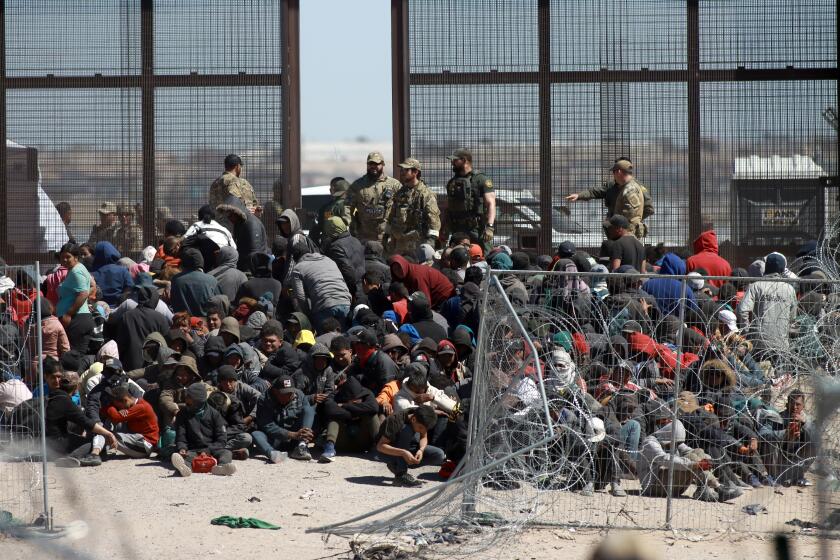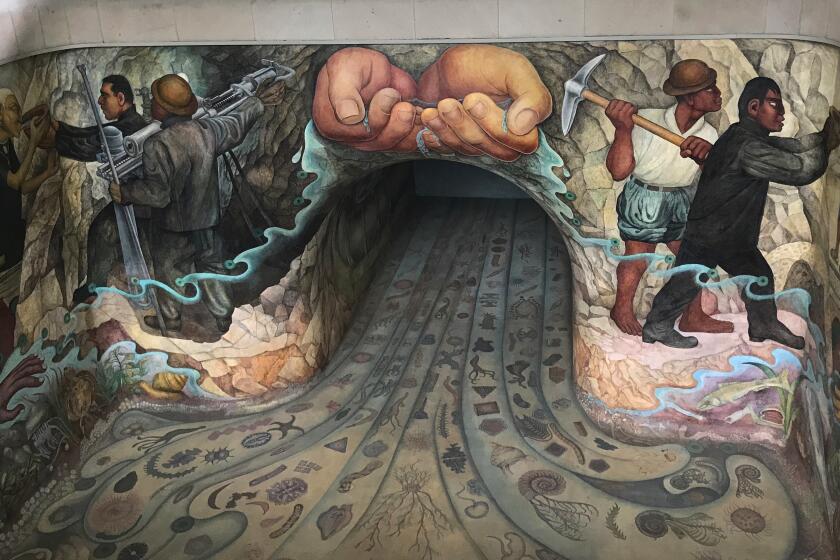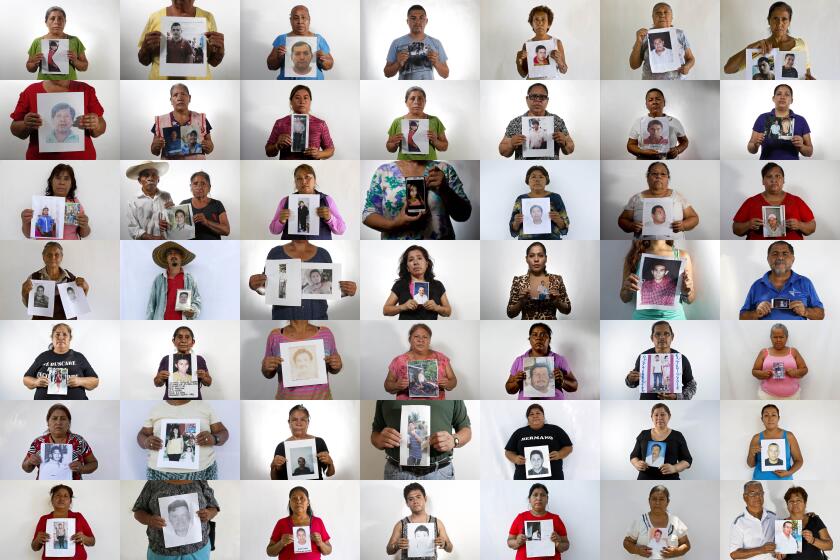Convictions in Mexico fail to quell demands for justice in massacres of migrants

- Share via
MEXICO CITY — It stands as one of Mexico’s most notorious crimes: The slayings of at least 265 U.S.-bound migrants in two separate massacres more than a decade ago.
The victims — mostly Central Americans — were kidnapped from buses headed to Mexican cities abutting Texas. Their bodies were discovered in 2010 and 2011 about 100 miles from the border in the municipality of San Fernando. Some showed signs of torture.
Activists and relatives of the victims have long accused Mexican authorities of slow-walking the investigation in an attempt to conceal official complicity. The case seemed destined to fade away like so many others.

On Aug. 21, the Mexican attorney general’s office announced that 11 former members of the notorious Zeta cartel had been convicted of murder and sentenced to 50 years in prison.
But rather than deliver a sense that justice had finally been served, the news quickly became a reminder of how much about the case remains unresolved.
An escalating turf war engulfing much of Mexico’s heavily Indigenous Chiapas state has displaced thousands as gangs battle for drug- and gun-trafficking routes.
“This took 13 years, and so much still remains unknown,” said Yesenia Valdez, a lawyer with Foundation for Justice, a nonprofit that represents relatives of the victims. “The government plan for years has been to render these criminal acts and extreme violations of human rights as invisible as possible.”
The protracted episode has been “shameful,” said Marcela Turati, a Mexican journalist whose book “San Fernando: Last Stop” chronicles the massacres and their aftermath.
Often referred to simply as San Fernando, the case ushered in a dark era in which discoveries of clandestine graves became increasingly common, as gang wars swept through much of the country. Mexico now counts more than 100,000 “disappeared.”
The first massacre occurred in August 2010. There were two survivors — one of them an 18-year-old Ecuadorean named Luis Freddy Lala, who reportedly was en route to join family members in New Jersey when gunmen forced him and other migrants off a bus and led them to a derelict farm shed, bound their wrists and forced them to lie face down on the ground.
“Suddenly I began to hear shots,” Lala recalled to Ecuador’s GamaTV in 2018. “I thought that they were shooting nearby — but no, they were shooting at my friends. Then they shot me. They finished shooting and they left. They killed everyone.”
Wounded in the neck and jaw, Lala feigned being dead. Once the killers decamped, he took off on foot looking for help. He encountered some troops and provided enough information to lead them to a remote ranch known as El Huizachal and a grisly scene: the bodies of 58 men and 14 women, all shot dead, execution style.
Immigration enforcement has long been the domain of the federal government. Texas is trying to change that.
Among the first investigating the slayings were the San Fernando security chief and a municipal prosecutor. Both were found killed days later.
In 2022, Mexico’s attorney general’s office announced that 18 former members of the Zeta cartel had been convicted in connection with the massacre and had received prison sentences of 13 to 58 years. The charges included kidnapping, drug trafficking and illegal firearms possession — but not murder.
The convictions last month involved the second San Fernando massacre, in which many victims were bludgeoned to death.
In April and May of 2011, authorities found a total of 196 bodies in 47 graves. It was unclear how long the remains had been there.
The convictions involved the murders of 122 migrants, according to prosecutors, who have not spoken publicly about the status of the other cases. Trials in Mexico are not conducted in public, and authorities have been especially unforthcoming about the San Fernando investigation.
Among those sentenced was Salvador Alfonso Martínez Escobedo, a former regional Zeta capo who was known as “The Squirrel” — an apparent reference to his buck teeth. He had been named by the Mexican military as the “mastermind” of the first massacre and has been in prison since 2012 for a variety of other crimes — including two mass jailbreaks and the 2010 murder of a U.S. jet-skier who was shot as he and his wife tooled around a border lake.
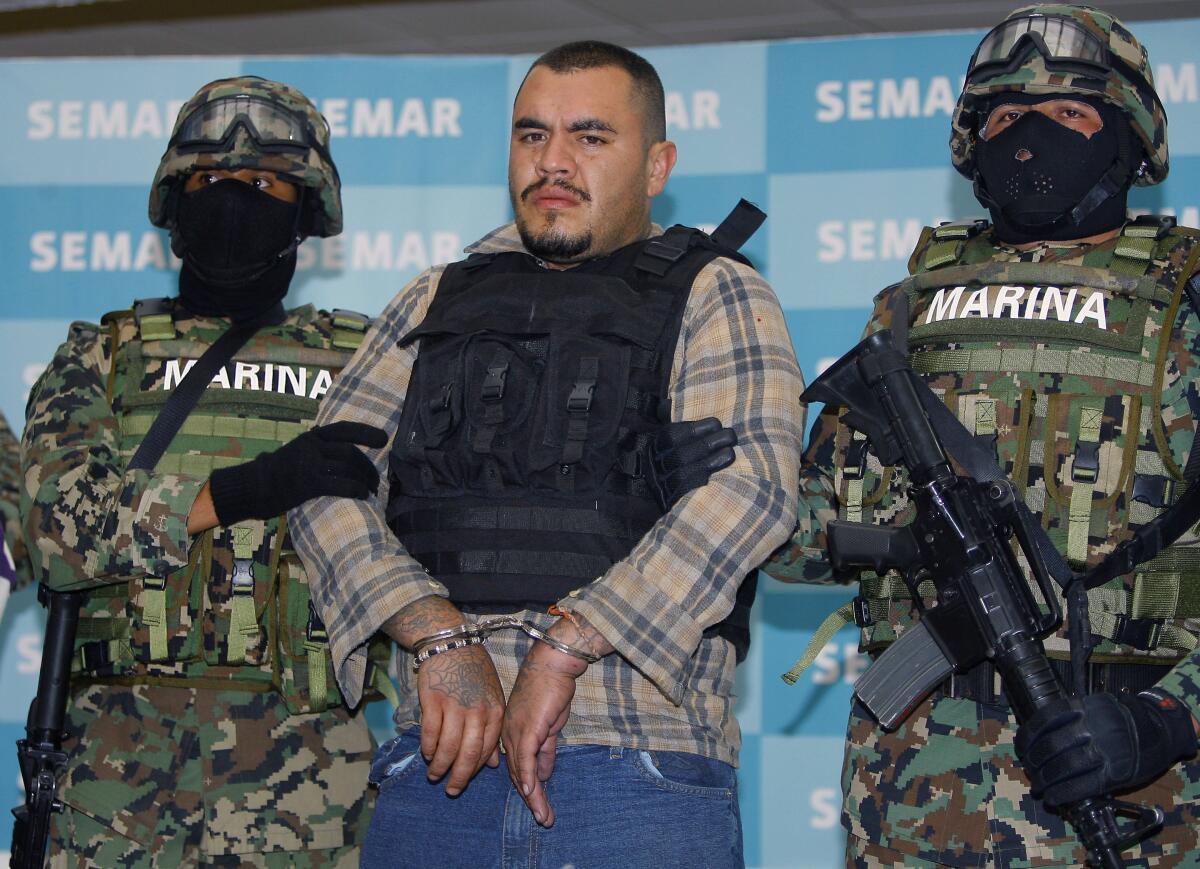
Spurring skepticism about the news last month is the fact that no police officers were included among those convicted — despite evidence that San Fernando cops were exuberant Zeta accomplices. In 2014, a memorandum surfaced from Mexican federal prosecutors stating that San Fernando police performed “lookout” tasks for the Zetas, aided in “interceptions” of people and were on the Zeta payroll. Instead of transporting prisoners to the town jail — known as “the pentagon” — cops “would just turn them over to the Zetas,” one police officer informed investigators.
Federal authorities initially arrested 17 San Fernando cops in connection with the murders, the memo states. Whether any were formally charged, convicted or sentenced remains unclear.
Nor have officials pinpointed a motive for the killings, though some speculate that the Zetas may have viewed the migrants as clients of a different cartel competing in the people-smuggling business.
The challenge in Mexico City, built amid lakes by the Aztecs, had long been getting rid of water, not storing it. Now its taps are running dry.
“This is not justice,” said Baudilio Castillo, 63, a Guatemalan farmer whose 23-year-old son, Baudilio Alexander, was designated by authorities as “cadaver 14” pulled from “Pit 1” in 2011. He had left his village with the plan of joining an elder brother in Louisiana, saving some money, and returning home in a few years to buy a house, get married and start a family.
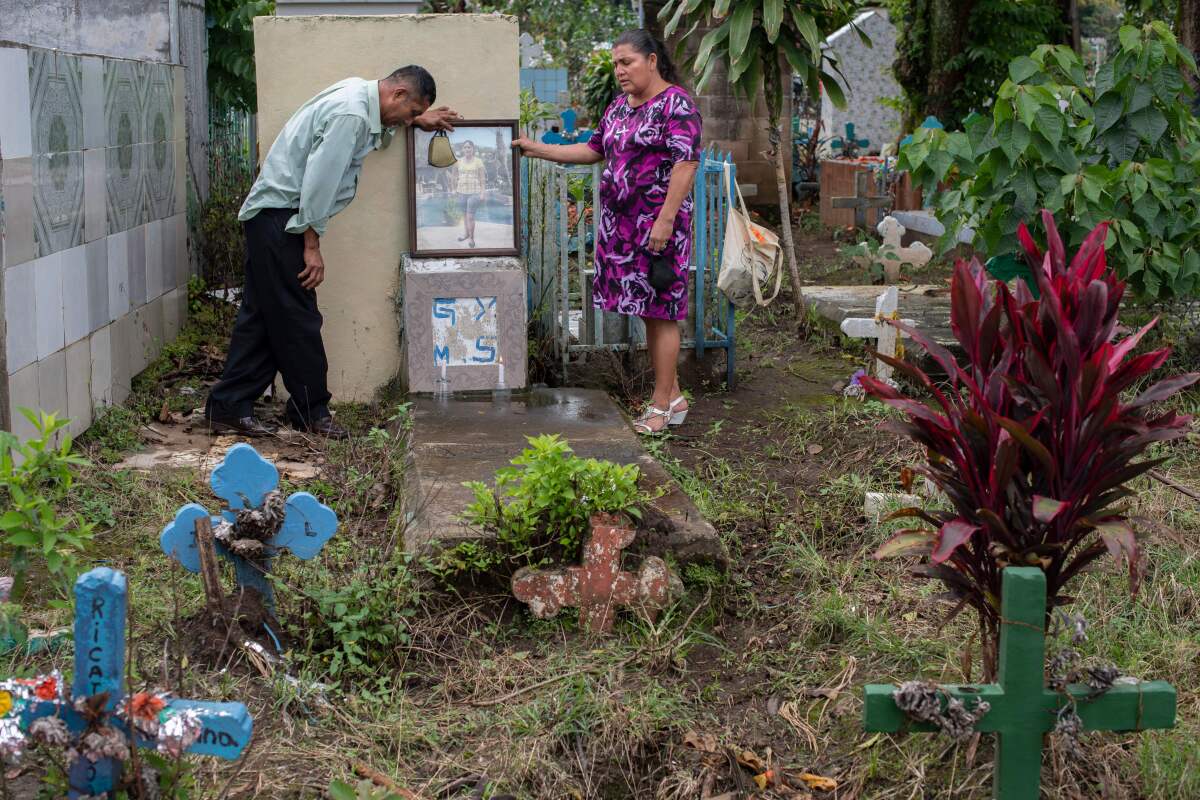
“My son died in a very cruel fashion. His head was cracked open,” Castillo said. “It is not just that so many who were responsible are still free — and, even if they are in jail, they get to see their families. While we will never see our son again.”
Many families accuse Mexican officials of stonewalling the investigation to mask official collusion and avoid paying any compensation.
“Now they say there are convictions — but is this everyone involved in the crime?” asked Bertilia Parada, whose son, Carlos Alberto, 26 at the time, was among those dumped in a mass grave. “I don’t believe anything the Mexicans say. All they have given us is years of trauma and suffering.”
Critics say the government of Mexican President Andrés Manuel López Obrador is trying to downplay how people have disappeared in recent years.
She and other relatives of the dead said official indifference was evident from the early weeks of 2011, when unclaimed luggage was accumulating at bus depots in Mexican border towns.
“How is it possible that buses keep arriving with no passengers aboard, only bags, and no one noticed that something was wrong?” asked Parada, 65, who makes her living selling pupusas in El Salvador.
Families waited years for the remains of loved ones to be delivered home after complex DNA analysis. In some instances, bodies were cremated without consent or the wrong remains were delivered. Parada was among those who traveled to Mexico to ensure that her son’s bones were returned to El Salvador and not cremated.
“That would have been like killing my son again,” she said in a telephone interview. “At least now it gives me some comfort to go to the grave on his birthday and leave a flower.”
Special correspondent Cecilia Sánchez Vidal contributed to this report.
More to Read
Sign up for Essential California
The most important California stories and recommendations in your inbox every morning.
You may occasionally receive promotional content from the Los Angeles Times.

